~ The Study of Threes ~
http://threesology.org
Visitors as of 6/10/2021

Many people have favorite numbers. They also have a favorite season of the year, a favorite beverage, a favorite food, a favorite color, a favorite friend, a favorite relative, a favorite ensemble of clothing, a favorite chair, a favorite pet, etc... Many people realize this and are inclined to collect such interests into a list out of which statistical measurements can be derived. Such an idea is used by many different industries wanting to establish human behavior patterns so as to obtain possible information that will serve to assist them in selling a product, be it life insurance, legal assistance, pseudo-medical advice, vehicles, clothing, etc... By collecting and collating "favorites", different industries can target such people who may be more receptive to a given type of sales pitch for a given product. As long as the motive for the collecting and analysis of "favorites" is government by greed, the usage of numbers in this instance is not viewed as a type of numerology. Indeed, it is entitled with the description of being a respected form of mathematics called statistics. However, if you suggest that Mathematics itself reveals the recurrence of "favorites" and that these favorites have underlying basic patterns, you might well be called a numerologist... particularly if your efforts are not directed towards the manipulation of others to gain some financial or social or military advantage.
If we subscribe to a convention of defining numerology as: "The study of numbers for the supposed purpose of predicting future events or seeking connections with the occult", we overlook that the word "occult" can be defined in a present day sense to represent hidden, mysterious or even the transcendental. Hence, present day "serious" mathematicians may well be described as occult figures to those mathematicians in the centuries ahead. Just as numerologists of the past dabbled in many fledgling/rudimentary subject areas (astrology, medicine, biology, pharmacology, weather prognostication, fortune telling, etc..), many mathematicians today are engaged in the exploration of number application to fields of study that were once devoid of mathematical inquiries. In fact, very often I find those who may view themselves as a serious mathematician, viewing the idea of numerology from misinterpretations. Take the following script for example. The author claims that a numerologist would focus on the "666" and its common reference to the biblical notion of the "beast". Yet, not all numerologists have such an affinity for interpreting number patterns through the lens of religion. Repetition of numbers do not have to be interpreted through any single lens, particularly if the patterns arise from multiple subjects.
The difference between mathematics and numerology
Numerologist is a four-letter word among mathematicians (I can imagine). Is numerology the same as number theory? Not really, the difference between numerology and number theory, as a branch of mathematics, can best be explained using an example.
Both numerologists and mathematicians study identities like:
A mathematician would notice that this is the sum of the first seven primes and rewrite the sum as:

The right-hand side sum is a number with equal digits, so the mathematician might look at other sums of consecutive primes and verify if these sums have similar patterns. Basically a mathematician is interested in anything that might lead to the formulation of a theorem, a proposition to prove mathematically.
A numerologist would immediately notice that 666 is the number of "The Beast", the representation of evil in the Christian belief system. Then, a numerologist might consider prime numbers divine, since they are the building blocks of all integers, and might try to formulate some law of good and bad represented in the sum-formula. Numerologists also believe that future events can be predicted so they will be extra alert to that.
I believe that it was until the Middle Ages that there was no real distinction between the profession of numerologist and mathematician. Newton has been called the last Alchemist, perhaps he was the last mathematician / numerologist as well. (History, I am afraid, is not my strongest point.) by Nilo de Roock, Saturday, October 22, 2011
So, a reader is led to believe that a "Numerologist" is to be defined by an association with a biblically-oriented impression but the fact that a "Mathematician" indulges in a focus of the "seven"... with its ancient roots in mysticism and the occult, is to be overlooked. What hypocrisy!
It is fairly silly to define a "Numerologist" in such terms. You would not do this to a doctor, nor mathematicians, nor mechanic. Though many share the same title, the title is a general reference but does not specify the person's particular interest. You can not put all people who are called a mathematician or scientists or production managers in the same category. The same goes for the title "Numerologist". To claim that someone engaged in what is described as numerology by those seeking to apply a pejorative term to them... as a means of distinguishing some other more sophisticated numerical activity to themselves, is rather biased, prejudicial and discriminatory. It's like using a race or religion or occupation card to portray a hierarchy of significance in tune with some practiced pecking order social indulgence.
The title "Numerologist" does not automatically mean a person is engaged in the interpretation of number patterns through the lens of a subject that is commonly viewed as being a skeptical or subjective exercise or one that is open to multiple forms of interpretation such as in the case when many think of Astrology. It is uncommon to find a mathematician or even non-mathematician looking at the recurring patterns found in mathematics as an expression of an underlying cognitive theme which can be seen in other subjects as well... and then collect and collate the recurring patterns found in multiple subject areas as a type of window in human thinking processes which are governed by a type of biology subjected to an incrementally deteriorating environment which appears to stress the adoption of a conservative approach to maintaining some semblance of equilibrium in such a deteriorating environment. one might think that Mathematicians would prefer that their subject stands outside normal human cognitive activity and thus the revealed patterns of recurrence do not display a similarity to the recurring cognitive patterns found in other subjects as well.
There is wide-spread hypocrisy in mathematics in that you may use mathematics to analyze any subject except for mathematics itself. It is not customary, and therefore not warranted to look at mathematics as an expression of human cognition using the avenue of mathematics to express basic cognitive patterns which can then be identified to represent a conservation... a limitation, that is related to an enforced usage due to an incrementally deteriorating environment.
While some Mathematicians and non-mathematicians have looked upon mathematics as an art form, there is an inclination to then describe the art form as being a more sophisticated expression... thus retaining the assumed distinction that Mathematics and Mathematics alone harbors above and beyond all other forms of thinking. And yet, mathematics reveals the same basic patterns of thought we find in all other subject areas, though mathematicians prefer to reverse this notion and claim that all subjects use some model of mathematics on basic levels. Like those in the past which claimed that the Sun revolves around the Earth, Mathematicians think that all subjects revolve in some manner around Mathematics. They do not want to pay witness to Mathematics as being little more than just another cognitive planet in an incrementally deteriorating environmental system.
If we look at some favorite equations, it is readily apparent to some observers that they express some basic 1-2-3... pattern, albeit in abstract ways. Similar to the different life forms on Earth which reveal individual differences... with similarities, while on a basic level there exists simple patterns such as DNA's triplet code. It is the same code we see in RNA and we also find a triple code in particle physics called the Proton- Neutron- Electron. While some may claim that there are four amino acids to both DNA and RNA as well as four structures to Proteins, they overlook evaluating the circumstance as a 3-to-1 ratio, just as when we place three zeroes before using a comma to separate the next set of three which begins with a single number such as 1,000.
| Item | --- One is different --- | --- Three the same --- |
| DNA = | Thymine | Adenosine- Cytosine- Guanine |
| RNA = | Uracil | Adenosine- Cytosine- Guanine |
| Protein structure = (such as in the ribbon model) |
Primary | Secondary (2)- Tertiary (3)- Quaternary (4) |
| Fundamental forces (viewed as a 3-to-1 ratio) {alternatives are possible} |
Weak force Some say gravity is the weakest |
Strong- Electro-magnetic- Gravitational |
| Seasons | Winter | Spring- Summer- Fall |
| Start/Stop Codons on/off, in/out, up/down, (dichotomies), etc... |
1 start codon | 3 stop codons |
| Mendelian Genetics (3 to 1 ratio) Recessive/Dominance (duality) |
Recessive trait (1) | Dominate trait (3) |
| (Dominant traits occur three times as much as Recessive trait.) Mendelian Genetics by Phillip McClean Mendel's 3 laws of intheritance: Law of Dominance- The Law of Segregation- Law of independent assortment | ||
| "4"-stroke engine | Exhaust stroke | Intake- Compression- Power strokes |
| Two words "one-thousand": | 1(,) | 000 |
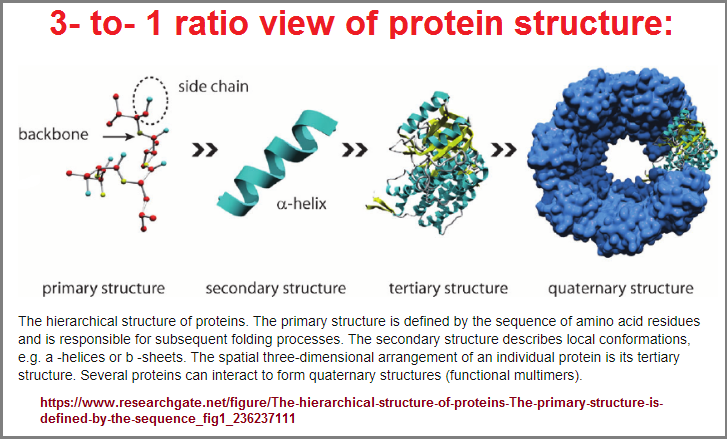
There are four fundamental forces at work in the universe: the strong force, the weak force, the electromagnetic force, and the gravitational force. They work over different ranges and have different strengths. Gravity is the weakest but it has an infinite range. The electromagnetic force also has infinite range but it is many times stronger than gravity. The weak and strong forces are effective only over a very short range and dominate only at the level of subatomic particles. Despite its name, the weak force is much stronger than gravity but it is indeed the weakest of the other three. The strong force, as the name suggests, is the strongest of all four fundamental interactions.
Hence, we can devise a 3-to-1 ratio based on strength or by range of application. In the first case we can say the Weak force is the "1", and in the latter case we can place the Gravitational force as the "1".
Yet, the "three the same, one is different" notion is not readily appreciated if we were to look separately at either DNA or RNA. Such an apparent distinction requires both to be placed side-by-side in order for us to make the comparison. However, once the generalized idea of a "3 to 1" ratio is consciously affixed to our considerations, a list of other examples starts to gain application to various ideas that would otherwise suggest a pattern-of-four to an unsuspecting collector of diverse information, whether or not their research intent is to describe a recurrence that another prefers to use a numerical label. The 3 to 1 ratio becomes another cataloguing tool that is differentiated from and complementary to a strict "threes" formula. (Three-to-One Ratios page A)
Interestingly, we find the recurring usage of three-patterned ensembles (sets) such as 1,2,3..., 2,3,4, 3,4,5, etc., which may well be defined as a finite set. When we speak of music and its association to mathematics in regards to set theory:
Mathematical set theory versus musical set theory
Although musical set theory is often thought to involve the application of mathematical set theory to music, there are numerous differences between the methods and terminology of the two. For example, musicians use the (two) terms transposition and inversion where mathematicians would use (the two terms) translation and reflection. Furthermore, where musical set theory refers to ordered sets, mathematics would normally refer to tuples or sequences (though mathematics does speak of ordered sets, and although these can be seen to include the musical kind in some sense, they are far more involved).
Moreover, musical set theory is more closely related to group theory and combinatorics than to mathematical set theory, which concerns itself with such matters as, for example, various sizes of infinitely large sets. In combinatorics, an unordered subset of n objects, such as pitch classes, is called a combination, and an ordered subset a permutation. Musical set theory is best regarded as a field that is not so much related to mathematical set theory, as an application of combinatorics to music theory with its own vocabulary. The main connection to mathematical set theory is the use of the vocabulary of set theory to talk about finite sets. (Set Theory (music))
Numerologically speaking from a religious perspective, there are those who claim that ensembles of repeating numbers reflect the presence of an angel, and are therefore referred to as Angel numbers. In looking at such a collection, one is reminded of the numerical pastimes some mathematicians engage in just for fun. The difference being Mathematicians don't take the sequences as seriously as do others nor interpret any extraneous meaning to the recurrences... other than perhaps to view them in the same manner as when one encounters a repeating song or melody... or odor, or reflection, or dream scape. Mathematicians simply find other uses for numbers to be applied for the purpose of accomplishing a task (equation), instead of letting the perception linger in an unfinished state of limbo that can be swayed by alterable interpretations based on mood, context, emotion and mental disposition. Collections of repeating numbers do not create the visual effect of a Ouija board or other medium used for divination.
Many people have a favorite Equation. Some equations may not be called someone's favorite, but otherwise given a special tribute. In any respect, we can see an underlying simple pattern being expressed with numbers and or symbols which convey a quantitative set of at least two elements such as 1 = 1, or 1 + 1 = 2, or 1 + 2 + 3 = 6. Using the mirror operations of add/subtract, multiply/divide, does not alter the basic pattern. Whereas an equation may be elaborate, its fundamental structure is based on a simple pattern, no matter what type or amount of mental gymnastics is applied.
Some equation are simple ones such as: Euler's (triple-patterned) Identity equation
Or Einstein's (triple-patterned) famous equation
Or the triple-patterned Pythagorean Theorem
Or more complex ones which define simple parameters of single, double or triple configurations (or multiples thereof):
Source for the following images: The 11 Most Beautiful Mathematical Equations by Clara Moskowitz, June 01, 2017:
 | |
 |
|
 |
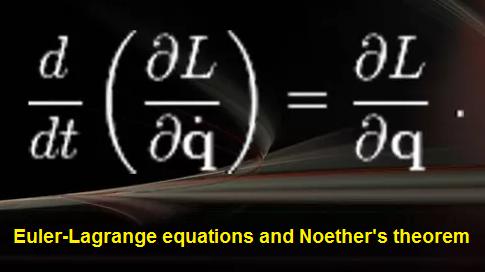 |
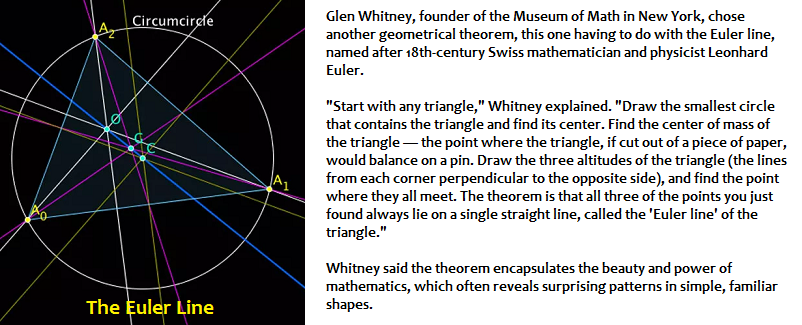 |
|
 |
 |
 |
|
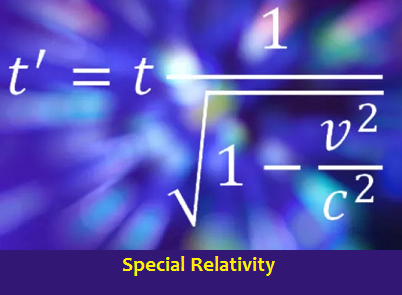 |
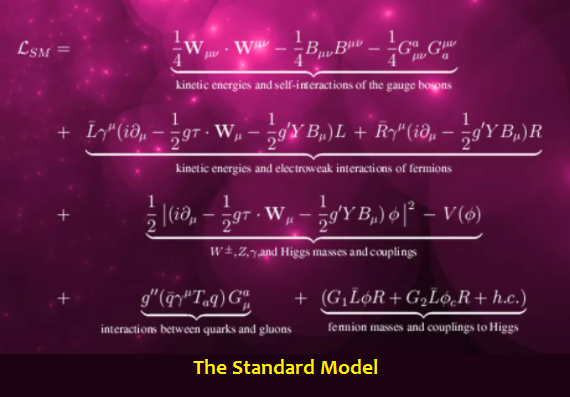 |
Mathematicians routinely court three-patterned ideas, albeit in embellished and elaborate ways, and despite the usage of dichotomies which are thus to be viewed as embellished dichotomies. Simply put, an embellished dichotomy can be portrayed with three items such as an apple, tomato and peanut, though all three are fruits. Hence in this sense, one might say the three represent an embellished singular idea. While one fruit comes from a tree, another from a bush, and the third from beneath the ground, the different types of fruit represent an embellishment (or concealment/camouflage) of the idea of a fruit. From logic we can imagine the mathematical notion of Major Premise + Minor Premise = Conclusion (or 1 + 2 = 3). In some cases only two items may be hidden to disrupt one's ability to recognize the presence of two oppositions or two complementaries. While language and other symbolic forms (art and music) permit one to conceal or overlook the presence of underlying patterns consistent with human cognition, math equations afford some individuals with doing the same thing. Their formulaic elaborations add frills and lace or a larger contextual environment which distracts one's ability to see the core presence of recurring patterns.
The fact that there are only10 value places in our numbering system: (0,1,2,3,4,5,6,7,8,9), describes a limitation that has not been looked at a reference to an environmental pressure(s) which enforces the uses of limitations as a survival mechanism. When we look at The 17 Equations That Changed The World by Max Nisen, July 10, 2012, 9:39 AM, we can see basic cognitive patterns despite the context to which a given equation may be used. All of them represent the same conservation being enforced on humans. Similarly, animals that are described as being able to have a rudimentary sense of number/quantity, also reflect the same enforcement of conservation perpetrated on our biology by the incrementally deteriorating environment.
If we look at basic set theory involving at least two elements (since a single element is not commonly classified as a set), a philosophical perspective reveals a basic two (A/B) from which comes three (Union, Intersection, Difference) and then a "four" which can be described as a 3-to-1 ratio:
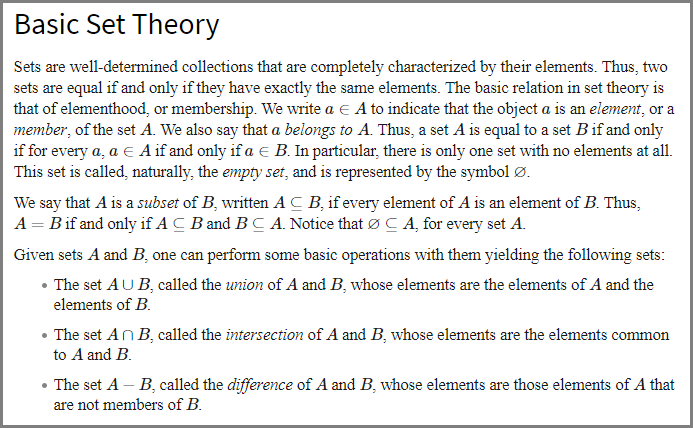

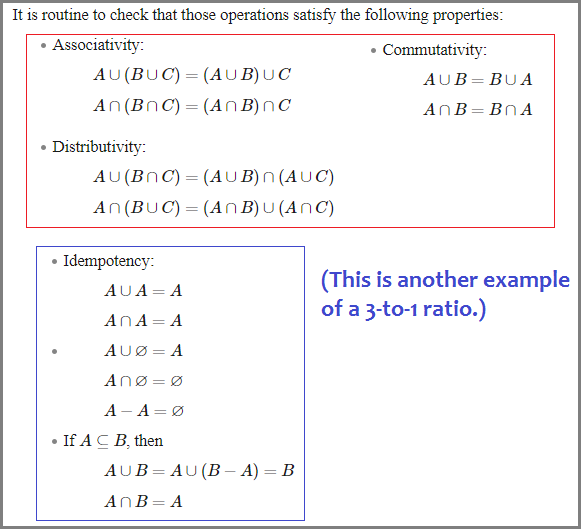
The triplet code in genetics and the recurring threes in particle physics are portrayals of the recurring patterns being entertained by the human mind, despite all the added features of complexity and entanglements one exercises to give themselves the impression that they are involved with something difficult to understand and therefore attests to some assumed unique perceptually intellectual ability. The underlying triplet code of DNA and RNA (and in one fashion also Proteins, unless one prefers the three to one ratios (page A) pattern is hidden by the elaborations of biological formulas called species, though we still identify three basic body plans called symmetrical, non-symmetrical and radial. For all the embellishments we find in physical designs, underlying the complexities of development exists simple patterns... much like those seen in fairytales, advertisements and everyday expressions. Since we see this same occurrence in multiple subjects, (including anatomy:
- List of threes in Anatomy
- Validity of the rule of threes and anatomical relationships in the thoracic spine
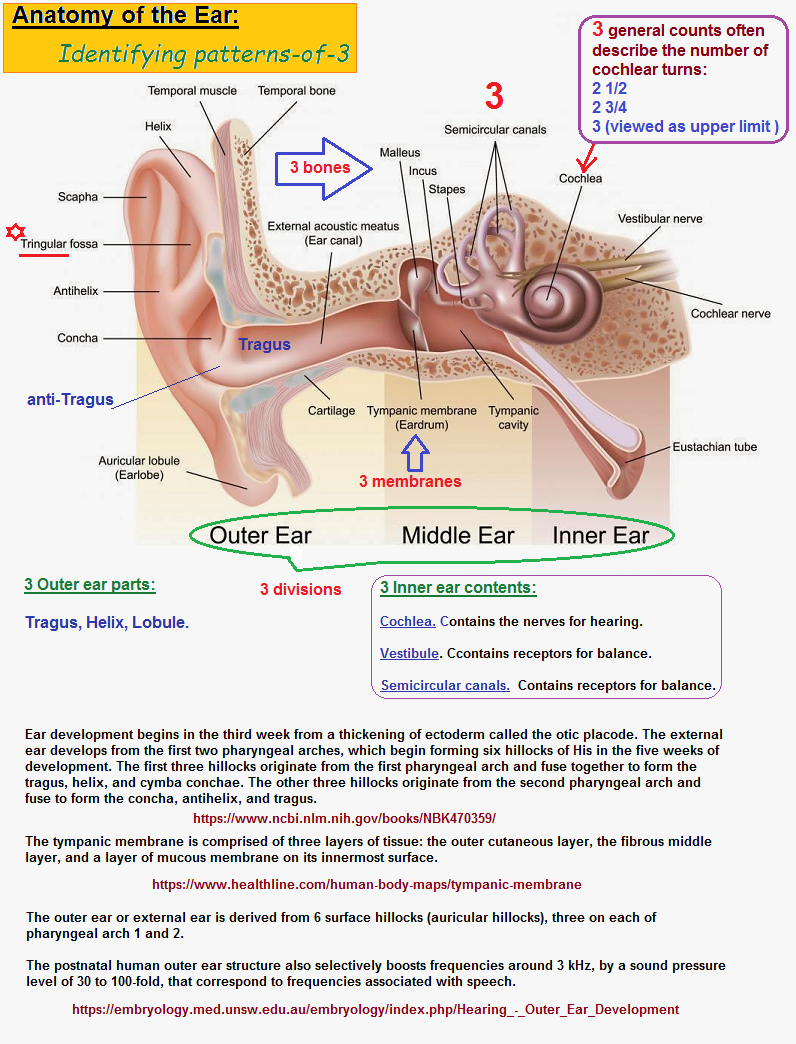
Language, Hearing, Cognition page 1
Such recurrences of simple patterns, and patterns of multiple items that display a limitation (such as the 118 elements of the periodic table), or the win-place-show of horse racing with its 14 horse maximum (due perhaps to the design of the starting gate by Clay Pruett) and the 14 races of the Breeders' Cup.
How the 14-horse field came to be
There's no clear answer for why 14 became the standard limit for a horse race, but it could be traced to Clay Puett. He built the first electric starting gate in 1939, and it has become the standard design for the majority of gates around the world, including the ones used at Churchill Downs.
Pruett's first gate was made for 12 horses, and tracks began asking for 14-horse gates as the sport's popularity grew.
..."The reason that they have 20 horses instead of 14, like they do in every other major race in America, including the Kentucky Oaks and all the Breeders' Cup races, which are kind of the gold standard races in America, is because — Churchill Downs makes more money on the races by having 20 horses in the race than by having 14 horses in the race," West said.
Is it time for the Kentucky Derby to stop running 20 horses? by Jason Frakes, Courier Journal; May 10th, 2019
Such recurring low number patterns should incline us to consider that it is due to an enforced (incrementally deteriorating) environmental accommodation instead of celebrating such patterns as Natural laws which can thus be used to bolster one's ego for having to uncovered the existence thereof. Such a recurrence should be cause for alarm, but instead, humans rationalize away the recurring simple patterns by not advocating them as a tell-tale sign that biology is subjected to an increasingly desperate situation. (Out of all the infinity of numbers available, only a few are in use... and only a few of them are more routinely used than others... both by human cognition and nature.
Again... if one does not have a favorite equation, one may well have a favorite number or food, or beverage or sport, or season, or vacation spot. And if analyzed, we can see an underlying simple pattern(s) similar to those found in other subjects. But in making such a comparison, those doing so are treated as if they are engaging in an act of numerology and not the collation of disparate data from which some statistic can be derived to provide further clues to the state of existence we call life on this planet.
Well then, if one has a favorite equation, it can be see as having an underlying simple expression derivable into a quantitative representation. Numbers frequently used by those claiming a favorite number are somewhat easier to identify the simple theme of cognition being used.
Date of Origination: 10 June 2021... 4:54 AM
Initial Posting: June 11th, 2021... 12:53 PM
Updated Posting: June 12th, 2021... 6:45 AM